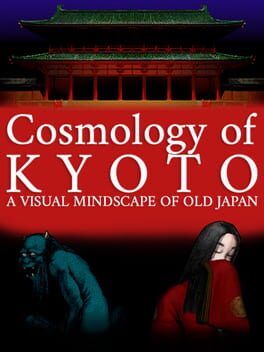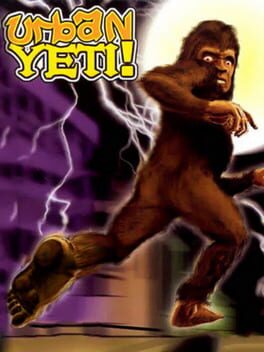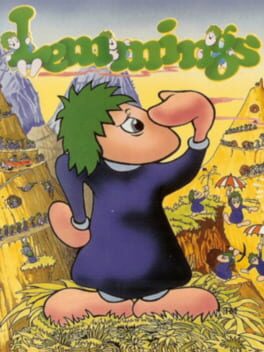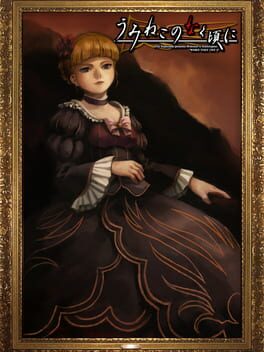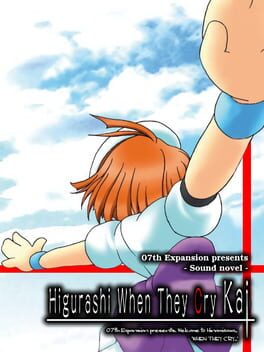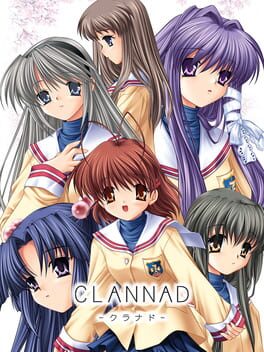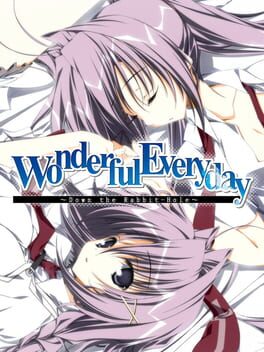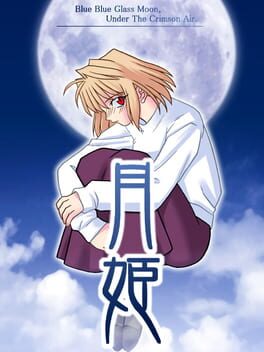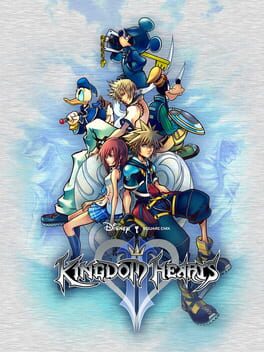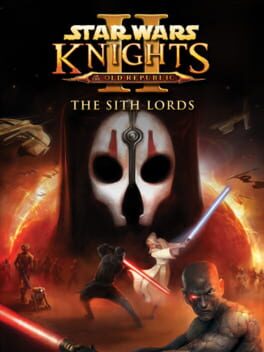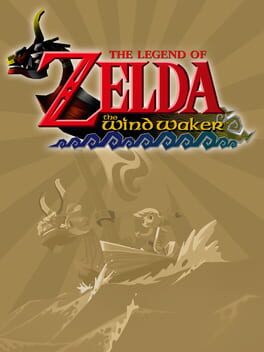nitronikolai
36 reviews liked by nitronikolai
Metal Gear Solid
1998
this was the moment in which the playstation made any and all competition look like a goddamned embarassment. if final fantasy vii wasn't already enough of an indicator that maybe nintendo should've reconsidered that cd-rom collaboration with sony, the release of metal gear solid is where they must've looked at themselves with their dicks in their hands and gone, "what the hell are we even doing here?" regardless of personal opinion or subjective takeaway, there is an objective throughline to the narrative design and storytelling of essentially the entire modern single-player gaming industry that leads back to 1998's metal gear solid. to call it one of the most influential video games ever made doesn't do its legacy justice. it's a game that continues to morph, bend, and redefine itself almost 25 years after its initial release. hell, it's a shame it didn't inspire MORE of the modern gaming world, in the sense that its experimentation and willingness to dip into the absurd and self-aware clearly was left behind in the shuffle tothe current generation's blockbusters. metal gear solid is a timeless experience that must truly be experienced to be believed.
the cumbersome burden of solid snake is felt in the control scheme, and while on some objective level it's aged, i'm willing to consider it part of the character and how the game defines snake in a metatextual sense to the player; the two may work in symbiosis by design of it being a video game, but there's also a discreet awareness in metal gear solid as a series that this is all, indeed, a video game - so regardless of whether it's intended or not (i'm willing to admit the likelihood kojima was bullshitting when he brought this up down the line, lol) i think it works to an effect. metal gear solid isn't difficult to control if you're used to titles of the era. the level design is immaculate - truly has an intentional "video game-y" feel especially in areas like the second vulcan raven duel, or the section where snake can't use his weapons, or the furnace section - that carries a distinctly futuristic and militant vibe heightened by the score. every piece of music in this game has to be etched into my skull at this point, the highest point of all undoubtedly being the vocal track "the best is yet to come" and its various instances in leitmotifs throughout the game. of course one can't discuss metal gear solid without nodding to the truly game-changing, top class voice performances across the entire class. this had to be a deep scare to the rest of the market at the time - english dubs of this level and with this much spoken dialogue was unheard of in this day and age, and to this day the performances and writing have aged tremendously.
the cinematography and scene composition of metal gear solid is truly amorphous. there are sequences where you might get away with calling this a horror game; the hallway before the cyborg ninja battle where you meet otacon, or the entirety of the psycho mantis sequence. there are moments in which characters' tension or intimacy is highlighted; the seductive ferocity of sniper wolf and snake's interactions, or the sparse moments of genuine care and peace between snake and meryl, or otacon. threats often are 'shot' to feel larger than life, like the sequence with the hind on the roof top, or the titular metal gear rex, which the game forces you to consider the sheer scope of by actually having you traverse its entire scale. while the narrative storytelling is deserving of its constant praise, i think it's these instances of master 'camera work' and visual storytelling that help the game feel a true cut above all the same.
there's much to be said about metal gear solid's sociopolitical messages or the means with which it deconstructs the media it draws much of its inspiration from, but i think one of the most prevelant themes of the game that resonated with me when i first played it as a teenager, especially in tandem with its sequel (a game i wonder if i could even talk about here to any level of justice) was its warcry in the name of individualism. what it means to be a free person, what freedom means and who, if anyone, has the means to attain it. metal gear solid makes it clear there is no war and no country that might offer you peace and liberty - it's a matter of self-attained enlightenment and a tranquility with your reality and surroundings that offers man the means to find true freedom. snake, otacon, fox, meryl, liquid, mantis, wolf, they're all soldiers of circumstance. to be a dog of war is to offer your life for the sake of freedom to observers - we see meryl go through the motions as she realizes, though, she IS green and that her perception of war and heroism was also propoganda all along. pretty girls and gruff rambo would-be's get shot and bleed out, too. the masters of war turn a blind eye and deploy the next one. if you want freedom, as dave and hal find out, you're going to have to go off the grid and find it yourself, no matter the cost.
metal gear solid wasn't afraid to consider possibilities that major titles even now tiptoe around - today's gaming industry has seen massive shooter franchises no longer even disguising their ulterior motives as nationalist propoganda. we've seen an industry willing to trounce creators and small teams in hopes of following trends that peter out within months. we've seen games that dare to question the status quo and dare to do something unique and challenging, thanks in no small part to this pioneer, only to be met with backlash about how games "are all political now" or some centrist hogwash talkpiece nonsense like that. look to the past, to metal gear solid, to learn the truth; when savant visionaries are given the resources, this is a medium that can offer truly life-changing experiences that will force discomfort and challenge preconcieved notions to its entire audience, while remaining heartfelt, loving and tender - universal. a story, a work of art without borders. in the 24 years since its release, metal gear solid still remains damn near the top of the line - one of the finest works of art in this entire medium.
the cumbersome burden of solid snake is felt in the control scheme, and while on some objective level it's aged, i'm willing to consider it part of the character and how the game defines snake in a metatextual sense to the player; the two may work in symbiosis by design of it being a video game, but there's also a discreet awareness in metal gear solid as a series that this is all, indeed, a video game - so regardless of whether it's intended or not (i'm willing to admit the likelihood kojima was bullshitting when he brought this up down the line, lol) i think it works to an effect. metal gear solid isn't difficult to control if you're used to titles of the era. the level design is immaculate - truly has an intentional "video game-y" feel especially in areas like the second vulcan raven duel, or the section where snake can't use his weapons, or the furnace section - that carries a distinctly futuristic and militant vibe heightened by the score. every piece of music in this game has to be etched into my skull at this point, the highest point of all undoubtedly being the vocal track "the best is yet to come" and its various instances in leitmotifs throughout the game. of course one can't discuss metal gear solid without nodding to the truly game-changing, top class voice performances across the entire class. this had to be a deep scare to the rest of the market at the time - english dubs of this level and with this much spoken dialogue was unheard of in this day and age, and to this day the performances and writing have aged tremendously.
the cinematography and scene composition of metal gear solid is truly amorphous. there are sequences where you might get away with calling this a horror game; the hallway before the cyborg ninja battle where you meet otacon, or the entirety of the psycho mantis sequence. there are moments in which characters' tension or intimacy is highlighted; the seductive ferocity of sniper wolf and snake's interactions, or the sparse moments of genuine care and peace between snake and meryl, or otacon. threats often are 'shot' to feel larger than life, like the sequence with the hind on the roof top, or the titular metal gear rex, which the game forces you to consider the sheer scope of by actually having you traverse its entire scale. while the narrative storytelling is deserving of its constant praise, i think it's these instances of master 'camera work' and visual storytelling that help the game feel a true cut above all the same.
there's much to be said about metal gear solid's sociopolitical messages or the means with which it deconstructs the media it draws much of its inspiration from, but i think one of the most prevelant themes of the game that resonated with me when i first played it as a teenager, especially in tandem with its sequel (a game i wonder if i could even talk about here to any level of justice) was its warcry in the name of individualism. what it means to be a free person, what freedom means and who, if anyone, has the means to attain it. metal gear solid makes it clear there is no war and no country that might offer you peace and liberty - it's a matter of self-attained enlightenment and a tranquility with your reality and surroundings that offers man the means to find true freedom. snake, otacon, fox, meryl, liquid, mantis, wolf, they're all soldiers of circumstance. to be a dog of war is to offer your life for the sake of freedom to observers - we see meryl go through the motions as she realizes, though, she IS green and that her perception of war and heroism was also propoganda all along. pretty girls and gruff rambo would-be's get shot and bleed out, too. the masters of war turn a blind eye and deploy the next one. if you want freedom, as dave and hal find out, you're going to have to go off the grid and find it yourself, no matter the cost.
metal gear solid wasn't afraid to consider possibilities that major titles even now tiptoe around - today's gaming industry has seen massive shooter franchises no longer even disguising their ulterior motives as nationalist propoganda. we've seen an industry willing to trounce creators and small teams in hopes of following trends that peter out within months. we've seen games that dare to question the status quo and dare to do something unique and challenging, thanks in no small part to this pioneer, only to be met with backlash about how games "are all political now" or some centrist hogwash talkpiece nonsense like that. look to the past, to metal gear solid, to learn the truth; when savant visionaries are given the resources, this is a medium that can offer truly life-changing experiences that will force discomfort and challenge preconcieved notions to its entire audience, while remaining heartfelt, loving and tender - universal. a story, a work of art without borders. in the 24 years since its release, metal gear solid still remains damn near the top of the line - one of the finest works of art in this entire medium.
Cosmology of Kyoto
1993
Final Fantasy XVI
2023
'Those great, beautiful ships, rocking silently on the calm waters, with their idle and wistful sails, are they not telling us in a silent language — when will we depart for happiness?'
– Charles Baudelaire, Fusées, VIII, 1887 (personal translation).
One of the most difficult issues in fantasy studies is to define its contours and, by extension, its relationship to reality. In her seminal study, Fantasy: The literature of subversion (1981), Rosemary Jackson points out that fantasy violates the conventions and rules of our reality and: 'threatens to subvert rules and conventions taken to be normative [and] disturb "rules" of artistic representation and literature’s reproduction of the "real"' [1]. The capacity for deviation that speculative fiction offers is both an opportunity and a danger. Jackson points out that this subversive potential does not mean that fantasy or the fantastic are genres that always aim for social progressivism. In fact, the overwhelming majority of the pulp tradition was steeped in racist, homophobic and misogynist tropes that exerted a lasting influence on fiction throughout the late twentieth century and to this day.
The misogynist issue in Western-style fantasy
Many authors hide behind these historical precedents to conceal a conservative discourse. The existence of multiple races allows for the perpetuation of social oppression, and while female characters have generally become more active in recent decades, they continue to fit into old-fashioned stereotypes [2]. The Final Fantasy series is part of this dynamic and has always oscillated between these major themes of fantasy fiction, notably by offering a regular comparison between magic and technological modernity, nature and industry, good and evil, humanity and divinity. These dichotomies are relatively common and allow the story to touch on issues such as capitalist exploitation and the use of natural resources. However, the representation of other topics remains disastrous: Final Fantasy XIV (2010) is especially characterised by deep-seated racism and sexism, the latter partially masked by the presence of strong female characters in positions of power.
It is hard to say whether these precautions were taken to appeal to a particular audience, but it is clear that Final Fantasy XVI ignores all these concerns and plunges into the most outrageous archaism, piling on misogynistic scenes wherever possible, supposedly justified by the harshness of European medieval society. Excuses of this kind obscure the real issues. The player follows the story of Clive Rosfield, drawn into a quest for revenge after the Phoenix Gate incident, which spells the end of the Duchy of Rosaria. Miraculously reunited with his childhood friend Jill Warrick, he joins Cid's group, determined to change the situation of the Bearers – magic-capable individuals enslaved across the continent. Final Fantasy XVI is therefore a tale of free will and independence, pitting the dark nature of the world against the purity of Cid and Clive's ideals.
To create this atmosphere, as well as the division between good and evil, the title makes extensive use of violence, sex and sexual violence as narrative drivers. Lenise Prater explains that Fiona McIntosh's Percheron trilogy (2005) constructs: 'a series of juxtapositions between good and evil [...] through the representation of sexual violence' [3]. The same processes are at work in Final Fantasy XVI, from the very first narrative arc of the adventure, where Benedikta is cast as the archetypal femme fatale, ready to use her body to manipulate her rivals: the character is constantly brought back to her status as a woman, and it is the threat of sexual violence that cements her development – Annabella is constructed in a similar way. Final Fantasy XVI revels in the dichotomy between whores and innocent virgins. Despite the Western aesthetic of the title, Jill is no more than a yamato nadeshiko who is constantly sidelined by the game. She mostly serves as a narrative device to advance the plot, through her multiple visits to the infirmary or because she is kidnapped by Clive's enemies. The title denies her any agency, and her nuanced fragility is only hinted at in a few sentences before being brushed aside: it takes almost thirty hours of gameplay before Clive explicitly asks her how she is, despite her constant concern for the protagonist's anxieties.
A case for centrism and laissez-faire
This conservative portrayal is echoed in the discourse on the Bearers. The game is moderately critical of slavery on the continent and fails to make it a structural issue for Clive, who always remains somewhat detached from the problem. This issue is structurally embedded in the way the player interacts with the world, as they are extremely passive in relation to the events portrayed in the story. While the player is aware of the political manipulations taking place in Storm, they cannot act on them directly; Clive is blindly thrown into the fray and the situation is simply resolved in a battle that depoliticises the social stakes. Similarly, the Seals donated by certain NPCs guarantee Clive's reputation in the community in a highly artificial way, removing any roughness from the interactions. Clive fights to free the Bearers because he inherits this mission from his father and Cid, but this task seems disembodied throughout the game.
Beyond the main quest, the side quests are particularly lacklustre and do little to deepen the world-building. Because they can be accessed at any point in the game, Final Fantasy XVI chooses to exclude companions from them. They simply disappear from the cutscenes and thus have no chance to react to the world around them. Since the intention is to establish Clive as an ideologically good, open and self-governing character, all side quests are resolved by Clive's ideological concessions or miraculous unifications in the face of artificially created danger, without the slightest contradiction from any of the other main characters. Only in the final stretch does someone point out Clive's hypocrisy and domineering power over Jill, but the scene is quickly swept away by the return of Gav, the comic relief of the group.
Final Fantasy XVI is more concerned with shocking, melodramatic or cathartic platitudes than with radical denunciations of inequality and oppression. Worse, these shocking scenes do not even make the world dynamic, so poor is the structure of the narrative. Two problems stand out. Firstly, the interweaving of high-intensity sequences with slower passages: instead of building up the world through genuine slice-of-life sequences, the game multiplies banalities that the player has already understood for several dozen hours. The temporality of the story is also incoherent. Clive seems to cross the continent in a matter of hours, while his rivals remain completely passive. The confrontation between the Sanbreque Empire and the Dhalmekian Republic is characterised by irrational stagnation and passivity, allowing Clive to strike unhindered. The Twins always remain static, despite long ellipses in time.
A hollow and meaningless experience
Perhaps Final Fantasy XVI should not be taken so literally, but rather accepted as the nekketsu it becomes in the second half of the game. Such an interpretation would be acceptable if the game did not take itself so seriously. However, as in Final Fantasy XIV, the writing wallows in a very uncomfortable theatrical heaviness – which the actors generally manage to save from disaster – as if clumsily mimicking the drama of Shakespeare's historical plays. However, Clive's disillusioned, self-deprecating, borderline comic character breaks up this fiction. Some characters work well, playing up their theatrical nature, such as Cid or Lord Byron, but they are quickly relegated to the background or an essentially comic role.
The shifts in tone and pacing detract from the development of the narrative, which cannot be saved by a few flashes of brilliance. The aetheric floods seem to have been imagined as a reflection of nuclear risks, highlighting the danger of Japan's post-Fukushima energy crutch, but in the end they are only used as a narrative expedient to create danger where the plot needs it. The pinnacle of dishonesty and disrespect for a title that centres its discourse on human free will lies in the choice of names for the NPC fillers. In the pure tradition of Final Fantasy XIV, they include puns and comical alliterations ('Broom-Bearer') that strip them of all substance and reduce them to ridicule. In the second half of the game, a little girl is introduced as a character of some narrative importance, but the title does not even bother to give her a name or address her living conditions.
Meanwhile, the action sequences prove to be particularly hollow. The choreography in the first few hours is quite ingenious, highlighting Clive's agility with complex movements and rather creative camera angles. As the title progresses, this aspect is abandoned in favour of fights that drag on and resort to nekketsu clichés. The duel against Titan lasts forty minutes and is a miserable succession of attacks around the stone tentacles. Final Fantasy XVI even has the audacity to end the battle not with the obvious cinematic climax, but with a dull and particularly unpleasant aerial sequence. Subsequent encounters also drag on for no apparent reason other than to demonstrate a genuine – if futile – mastery of the lightning engine.
Ergonomics, gameplay and fluidity
While Final Fantasy XVI boasts detailed environments at first glance, the facade quickly cracks. The early areas are indeed highly detailed, to the point of drowning the player in detail – navigating through the thick vegetation is quite difficult, forcing the player to use Torgal to progress – but the quality deteriorates as the game progresses. The dense environments disappear in favour of vast open areas that struggle to convey the majesty of the world. Although the cities visible on the horizon are beautiful backdrops, they fail to radiate materially onto their surroundings, which then become mere abstractions. Moreover, Clive's movement is extremely sluggish: even getting on his chocobo is an unpleasant task that constantly interrupts the fluidity of the action, while the player is condemned to an extraordinary passivity in order to get from one place to another.
In the Hideaway, this impression is reinforced by Clive's inability to sprint: in the second half of the game, getting to the backyard is a gruelling chore. The magic of this cocoon quickly vanishes, as the various characters keep repeating themselves and are only mediocrely animated. Despite the detailed scenery, the game borrows all its animations from Final Fantasy XIV, giving a very artificial tone to the discussions. The Hideaway is less a place where the player can comfortably catch up with their favourite NPCs, and more a burdensome obligation to access NPCs, side quests and the hunt board – requiring the player to physically go there to see the location of elite monsters, a design mistake that even Final Fantasy XIV avoided.
The enjoyment of the combat system is left to the player and their experience of other character-action games, but it is absurd that the player has to wait at least twenty hours to finally be given a modicum of flexibility in their attack options: Final Fantasy XVI justifies its unique protagonist with a deep combat system that encourages the creation of diverse builds, but this philosophy is only appropriate in a New Game+ where all powers are unlocked from the start. In a first playthrough, the player must suffer from an impressive slowness, to the point where the Story Mode becomes an obvious option. The title here echoes the recent problem of Shadowbringers (2019) and especially Endwalker (2021), which first designs its battles with the Extreme and Savage versions, before cutting out the most difficult sections for the Normal versions – the result is a sense of incompleteness that is particularly damaging when combined with the very slowly evolving combat system.
It is difficult to place Final Fantasy XVI in the landscape of modern Japanese video games, so awkward is it in every way. With the title still in its cycle of artificial marketing in preparation for the DLCs, one can only speculate as to the reasons for these failings. Perhaps the lack of coherence can be explained by the fractured development team working on two major games, and the highly eclectic nature of the directors brought together by Naoki Yoshida. His design philosophy is particularly well suited to an MMO, but Final Fantasy XVI suffers greatly from it: the endless succession of side quests involving the Hideaway characters just before the final battle is incomprehensible, as if the game had remembered that it needed to conclude. Hiroshi Takai and Kazutoyo Maehiro's narrative vision is a series of shocking, empty, meaningless scenes: players of Heavensward (2015) had the opportunity to suffer from Ysayle's portrayal, and it is surprising that Final Fantasy XVI does even worse, a standard-bearer for passive misogyny in modern fantasy. That Jill's theme becomes 'My Star' and denies her any agency in the game's final moments is particularly painful and aptly sums up the title.
__________
[1] Rosemary Jackson, Fantasy: The literature of subversion, Routledge, London, 2005 [1981], p. 14.
[2] On the topic, see for example Peter Bebergal (ed.), Appendix N: The Eldritch Roots Of Dungeons & Dragons, Strange Attractor Press, London, 2021. In the afterword, Ann VanderMeer discusses the conservative roots of pulp fantasy and of the historical TTRPG.
[3] Lenise Prater, 'Monstrous Fantasies: Reinforcing Rape Culture in Fiona McIntosh's Fantasy Novels', in Hecate, vol. 39, no. 1-2, 2014.
– Charles Baudelaire, Fusées, VIII, 1887 (personal translation).
One of the most difficult issues in fantasy studies is to define its contours and, by extension, its relationship to reality. In her seminal study, Fantasy: The literature of subversion (1981), Rosemary Jackson points out that fantasy violates the conventions and rules of our reality and: 'threatens to subvert rules and conventions taken to be normative [and] disturb "rules" of artistic representation and literature’s reproduction of the "real"' [1]. The capacity for deviation that speculative fiction offers is both an opportunity and a danger. Jackson points out that this subversive potential does not mean that fantasy or the fantastic are genres that always aim for social progressivism. In fact, the overwhelming majority of the pulp tradition was steeped in racist, homophobic and misogynist tropes that exerted a lasting influence on fiction throughout the late twentieth century and to this day.
The misogynist issue in Western-style fantasy
Many authors hide behind these historical precedents to conceal a conservative discourse. The existence of multiple races allows for the perpetuation of social oppression, and while female characters have generally become more active in recent decades, they continue to fit into old-fashioned stereotypes [2]. The Final Fantasy series is part of this dynamic and has always oscillated between these major themes of fantasy fiction, notably by offering a regular comparison between magic and technological modernity, nature and industry, good and evil, humanity and divinity. These dichotomies are relatively common and allow the story to touch on issues such as capitalist exploitation and the use of natural resources. However, the representation of other topics remains disastrous: Final Fantasy XIV (2010) is especially characterised by deep-seated racism and sexism, the latter partially masked by the presence of strong female characters in positions of power.
It is hard to say whether these precautions were taken to appeal to a particular audience, but it is clear that Final Fantasy XVI ignores all these concerns and plunges into the most outrageous archaism, piling on misogynistic scenes wherever possible, supposedly justified by the harshness of European medieval society. Excuses of this kind obscure the real issues. The player follows the story of Clive Rosfield, drawn into a quest for revenge after the Phoenix Gate incident, which spells the end of the Duchy of Rosaria. Miraculously reunited with his childhood friend Jill Warrick, he joins Cid's group, determined to change the situation of the Bearers – magic-capable individuals enslaved across the continent. Final Fantasy XVI is therefore a tale of free will and independence, pitting the dark nature of the world against the purity of Cid and Clive's ideals.
To create this atmosphere, as well as the division between good and evil, the title makes extensive use of violence, sex and sexual violence as narrative drivers. Lenise Prater explains that Fiona McIntosh's Percheron trilogy (2005) constructs: 'a series of juxtapositions between good and evil [...] through the representation of sexual violence' [3]. The same processes are at work in Final Fantasy XVI, from the very first narrative arc of the adventure, where Benedikta is cast as the archetypal femme fatale, ready to use her body to manipulate her rivals: the character is constantly brought back to her status as a woman, and it is the threat of sexual violence that cements her development – Annabella is constructed in a similar way. Final Fantasy XVI revels in the dichotomy between whores and innocent virgins. Despite the Western aesthetic of the title, Jill is no more than a yamato nadeshiko who is constantly sidelined by the game. She mostly serves as a narrative device to advance the plot, through her multiple visits to the infirmary or because she is kidnapped by Clive's enemies. The title denies her any agency, and her nuanced fragility is only hinted at in a few sentences before being brushed aside: it takes almost thirty hours of gameplay before Clive explicitly asks her how she is, despite her constant concern for the protagonist's anxieties.
A case for centrism and laissez-faire
This conservative portrayal is echoed in the discourse on the Bearers. The game is moderately critical of slavery on the continent and fails to make it a structural issue for Clive, who always remains somewhat detached from the problem. This issue is structurally embedded in the way the player interacts with the world, as they are extremely passive in relation to the events portrayed in the story. While the player is aware of the political manipulations taking place in Storm, they cannot act on them directly; Clive is blindly thrown into the fray and the situation is simply resolved in a battle that depoliticises the social stakes. Similarly, the Seals donated by certain NPCs guarantee Clive's reputation in the community in a highly artificial way, removing any roughness from the interactions. Clive fights to free the Bearers because he inherits this mission from his father and Cid, but this task seems disembodied throughout the game.
Beyond the main quest, the side quests are particularly lacklustre and do little to deepen the world-building. Because they can be accessed at any point in the game, Final Fantasy XVI chooses to exclude companions from them. They simply disappear from the cutscenes and thus have no chance to react to the world around them. Since the intention is to establish Clive as an ideologically good, open and self-governing character, all side quests are resolved by Clive's ideological concessions or miraculous unifications in the face of artificially created danger, without the slightest contradiction from any of the other main characters. Only in the final stretch does someone point out Clive's hypocrisy and domineering power over Jill, but the scene is quickly swept away by the return of Gav, the comic relief of the group.
Final Fantasy XVI is more concerned with shocking, melodramatic or cathartic platitudes than with radical denunciations of inequality and oppression. Worse, these shocking scenes do not even make the world dynamic, so poor is the structure of the narrative. Two problems stand out. Firstly, the interweaving of high-intensity sequences with slower passages: instead of building up the world through genuine slice-of-life sequences, the game multiplies banalities that the player has already understood for several dozen hours. The temporality of the story is also incoherent. Clive seems to cross the continent in a matter of hours, while his rivals remain completely passive. The confrontation between the Sanbreque Empire and the Dhalmekian Republic is characterised by irrational stagnation and passivity, allowing Clive to strike unhindered. The Twins always remain static, despite long ellipses in time.
A hollow and meaningless experience
Perhaps Final Fantasy XVI should not be taken so literally, but rather accepted as the nekketsu it becomes in the second half of the game. Such an interpretation would be acceptable if the game did not take itself so seriously. However, as in Final Fantasy XIV, the writing wallows in a very uncomfortable theatrical heaviness – which the actors generally manage to save from disaster – as if clumsily mimicking the drama of Shakespeare's historical plays. However, Clive's disillusioned, self-deprecating, borderline comic character breaks up this fiction. Some characters work well, playing up their theatrical nature, such as Cid or Lord Byron, but they are quickly relegated to the background or an essentially comic role.
The shifts in tone and pacing detract from the development of the narrative, which cannot be saved by a few flashes of brilliance. The aetheric floods seem to have been imagined as a reflection of nuclear risks, highlighting the danger of Japan's post-Fukushima energy crutch, but in the end they are only used as a narrative expedient to create danger where the plot needs it. The pinnacle of dishonesty and disrespect for a title that centres its discourse on human free will lies in the choice of names for the NPC fillers. In the pure tradition of Final Fantasy XIV, they include puns and comical alliterations ('Broom-Bearer') that strip them of all substance and reduce them to ridicule. In the second half of the game, a little girl is introduced as a character of some narrative importance, but the title does not even bother to give her a name or address her living conditions.
Meanwhile, the action sequences prove to be particularly hollow. The choreography in the first few hours is quite ingenious, highlighting Clive's agility with complex movements and rather creative camera angles. As the title progresses, this aspect is abandoned in favour of fights that drag on and resort to nekketsu clichés. The duel against Titan lasts forty minutes and is a miserable succession of attacks around the stone tentacles. Final Fantasy XVI even has the audacity to end the battle not with the obvious cinematic climax, but with a dull and particularly unpleasant aerial sequence. Subsequent encounters also drag on for no apparent reason other than to demonstrate a genuine – if futile – mastery of the lightning engine.
Ergonomics, gameplay and fluidity
While Final Fantasy XVI boasts detailed environments at first glance, the facade quickly cracks. The early areas are indeed highly detailed, to the point of drowning the player in detail – navigating through the thick vegetation is quite difficult, forcing the player to use Torgal to progress – but the quality deteriorates as the game progresses. The dense environments disappear in favour of vast open areas that struggle to convey the majesty of the world. Although the cities visible on the horizon are beautiful backdrops, they fail to radiate materially onto their surroundings, which then become mere abstractions. Moreover, Clive's movement is extremely sluggish: even getting on his chocobo is an unpleasant task that constantly interrupts the fluidity of the action, while the player is condemned to an extraordinary passivity in order to get from one place to another.
In the Hideaway, this impression is reinforced by Clive's inability to sprint: in the second half of the game, getting to the backyard is a gruelling chore. The magic of this cocoon quickly vanishes, as the various characters keep repeating themselves and are only mediocrely animated. Despite the detailed scenery, the game borrows all its animations from Final Fantasy XIV, giving a very artificial tone to the discussions. The Hideaway is less a place where the player can comfortably catch up with their favourite NPCs, and more a burdensome obligation to access NPCs, side quests and the hunt board – requiring the player to physically go there to see the location of elite monsters, a design mistake that even Final Fantasy XIV avoided.
The enjoyment of the combat system is left to the player and their experience of other character-action games, but it is absurd that the player has to wait at least twenty hours to finally be given a modicum of flexibility in their attack options: Final Fantasy XVI justifies its unique protagonist with a deep combat system that encourages the creation of diverse builds, but this philosophy is only appropriate in a New Game+ where all powers are unlocked from the start. In a first playthrough, the player must suffer from an impressive slowness, to the point where the Story Mode becomes an obvious option. The title here echoes the recent problem of Shadowbringers (2019) and especially Endwalker (2021), which first designs its battles with the Extreme and Savage versions, before cutting out the most difficult sections for the Normal versions – the result is a sense of incompleteness that is particularly damaging when combined with the very slowly evolving combat system.
It is difficult to place Final Fantasy XVI in the landscape of modern Japanese video games, so awkward is it in every way. With the title still in its cycle of artificial marketing in preparation for the DLCs, one can only speculate as to the reasons for these failings. Perhaps the lack of coherence can be explained by the fractured development team working on two major games, and the highly eclectic nature of the directors brought together by Naoki Yoshida. His design philosophy is particularly well suited to an MMO, but Final Fantasy XVI suffers greatly from it: the endless succession of side quests involving the Hideaway characters just before the final battle is incomprehensible, as if the game had remembered that it needed to conclude. Hiroshi Takai and Kazutoyo Maehiro's narrative vision is a series of shocking, empty, meaningless scenes: players of Heavensward (2015) had the opportunity to suffer from Ysayle's portrayal, and it is surprising that Final Fantasy XVI does even worse, a standard-bearer for passive misogyny in modern fantasy. That Jill's theme becomes 'My Star' and denies her any agency in the game's final moments is particularly painful and aptly sums up the title.
__________
[1] Rosemary Jackson, Fantasy: The literature of subversion, Routledge, London, 2005 [1981], p. 14.
[2] On the topic, see for example Peter Bebergal (ed.), Appendix N: The Eldritch Roots Of Dungeons & Dragons, Strange Attractor Press, London, 2021. In the afterword, Ann VanderMeer discusses the conservative roots of pulp fantasy and of the historical TTRPG.
[3] Lenise Prater, 'Monstrous Fantasies: Reinforcing Rape Culture in Fiona McIntosh's Fantasy Novels', in Hecate, vol. 39, no. 1-2, 2014.
Urban Yeti!
2002
Lemmings
1991
Xenogears
1998
Castlevania
1986
When I was younger and I hadn’t played many older games and I wasn’t really paying attention to the ones that I HAD I would often find myself thinking that while some games were obviously worth recognizing for being the first in iconic series and having cool music and being the foundations upon which great things would be built, there wasn’t ACTUALLY that much separating something like a Mario or a Zelda from the kinds of games that we had in my house growing up that were utterly forgotten by history like Kung Fu Heroes and Swords and Serpents, or actively maligned like Home Alone 2 or Battletoads. OBVIOUSLY this was an ignorant way to think about these games, a dismissive attitude informed by an unwillingness to branch out of my comfort zone, one that I talk about often on here. Making an active effort to shed this attitude is a general good because it not only helps me better appreciate the more run of the mill or forgotten games of the era as worthy of attention and examination but it does also help me identify DA CLASSICS and goddamn is Castlevania ever one of those.
Obviously there’s a lot here that does this, from the nonstop bangers (a game with ten pieces of music where every single one of them is a stone cold classic broooooooo) that are perfectly matched to the tone of each stage, to the variety between those stages despite the relatively limited bag of tricks the devs were working with, to the deliberate control scheme, to the distinctly minimal number of fuck off dickhead unfair set pieces. Even the premise is pitch perfect, goofy enough to be remarkable, for every moment where you turn a proverbial corner into a new boss pulled from the classic movie monster canon to be worth a hearty chuckle without shedding the instantly classic schlock horror vibe it’s cultivating.
I think the thing that’s really cool to me though, especially for a game from 1986, is how well Castlevania establishes, uh Castlevania. Like, the castle itself. For a game with literally no text in it, Castlevania (the game) does an incredible job at rooting you in its senses of character, of narrative, of place. The theme park tour of Dracula’s castle takes you through grounds and gardens, over towers and parapets, down into dungeons and caves, and it all feels like a natural progression. You get that little map screen in between stages that shows your progress through the castle and you can really feel it. Castlevania does the smart thing of mixing you up between moving left-to-right and moving right-to-left too, which doesn’t sound like much but it does make it feel a lot more like you’re working your way through a real building complex and less like only a series of levels. This kind of attention to detail is what elevates those good games to Great ones. It makes Castlevania a real pleasure to experience, it makes it immersive. It’s so cool to find that degree of world in a linear sidescrolling action platformer on the NES. Games are so cool! It’s this kind of shit that keeps me excited for the medium.
FUCK the hallway before the grim reaper though, all my homies hate the hallway before the grim reaper.
NEXT TIME: SIMON'S QUEST
Obviously there’s a lot here that does this, from the nonstop bangers (a game with ten pieces of music where every single one of them is a stone cold classic broooooooo) that are perfectly matched to the tone of each stage, to the variety between those stages despite the relatively limited bag of tricks the devs were working with, to the deliberate control scheme, to the distinctly minimal number of fuck off dickhead unfair set pieces. Even the premise is pitch perfect, goofy enough to be remarkable, for every moment where you turn a proverbial corner into a new boss pulled from the classic movie monster canon to be worth a hearty chuckle without shedding the instantly classic schlock horror vibe it’s cultivating.
I think the thing that’s really cool to me though, especially for a game from 1986, is how well Castlevania establishes, uh Castlevania. Like, the castle itself. For a game with literally no text in it, Castlevania (the game) does an incredible job at rooting you in its senses of character, of narrative, of place. The theme park tour of Dracula’s castle takes you through grounds and gardens, over towers and parapets, down into dungeons and caves, and it all feels like a natural progression. You get that little map screen in between stages that shows your progress through the castle and you can really feel it. Castlevania does the smart thing of mixing you up between moving left-to-right and moving right-to-left too, which doesn’t sound like much but it does make it feel a lot more like you’re working your way through a real building complex and less like only a series of levels. This kind of attention to detail is what elevates those good games to Great ones. It makes Castlevania a real pleasure to experience, it makes it immersive. It’s so cool to find that degree of world in a linear sidescrolling action platformer on the NES. Games are so cool! It’s this kind of shit that keeps me excited for the medium.
FUCK the hallway before the grim reaper though, all my homies hate the hallway before the grim reaper.
NEXT TIME: SIMON'S QUEST
Now, I wasn't originally planning on giving this one a shot because I thought it was gonna be more generic wii mario, but I immediately picked it up when I saw that hilarious xbox brain poisoned tweet that went like:
THEY WANT YOU TO BELIEVE THIS
mario jumping around getting coins yahoo
IS BETTER THAN THIS
guy just walking in starfield doing fucking nothing
DONT WATCH THE GAME AWARDS!
THEY WANT YOU TO BELIEVE THIS
mario jumping around getting coins yahoo
IS BETTER THAN THIS
guy just walking in starfield doing fucking nothing
DONT WATCH THE GAME AWARDS!
The Legend of Zelda
1986
Remarkably, the good majority of Zelda holds up in the current day. It's interesting to hear people call this a "guide game" in a negative lens because... that's always how it was marketed and sold to us. The manual that comes with the game not only expands quite a deal on the story and context of this first entry, but includes gorgeous artwork and maps - complete with walkthroughs for the first few dungeons - to get a new player started. This was indeed always meant to be an adventure, one the player would get their nose lost in manuals, handwritten notes and drawings, and of course not the least of which murmurings and tips passed between friends in the schoolyard and the fabled Nintendo hotline.
That said, the original Zelda experience isn't without flaw, for all of its adventure purist expression. I think Miyamoto and the team learned pretty quickly that an indicator for which bushes to burn, which boulders and walls to bomb, and stronger guidance for the sake of general gameplay flow were all in order by the time Link to the Past would roll around. The combat so desperately wants Link to have an arced swing of his sword, evidenced by how much combat relies on inter-tile maneuvering, but it's not quite there yet. Still a massive step in the right direction from the competitions' push-combat approach... much as I do like early Ys. What's here is still very solid, and a great deal of fun. I just replayed this with my best friend in an impromptu single session and it didn't drag at all. For as minimal and bare-bones as Zelda feels now, that adds to the unique charm and status it takes within its series and adventure games as a whole.
That said, the original Zelda experience isn't without flaw, for all of its adventure purist expression. I think Miyamoto and the team learned pretty quickly that an indicator for which bushes to burn, which boulders and walls to bomb, and stronger guidance for the sake of general gameplay flow were all in order by the time Link to the Past would roll around. The combat so desperately wants Link to have an arced swing of his sword, evidenced by how much combat relies on inter-tile maneuvering, but it's not quite there yet. Still a massive step in the right direction from the competitions' push-combat approach... much as I do like early Ys. What's here is still very solid, and a great deal of fun. I just replayed this with my best friend in an impromptu single session and it didn't drag at all. For as minimal and bare-bones as Zelda feels now, that adds to the unique charm and status it takes within its series and adventure games as a whole.

